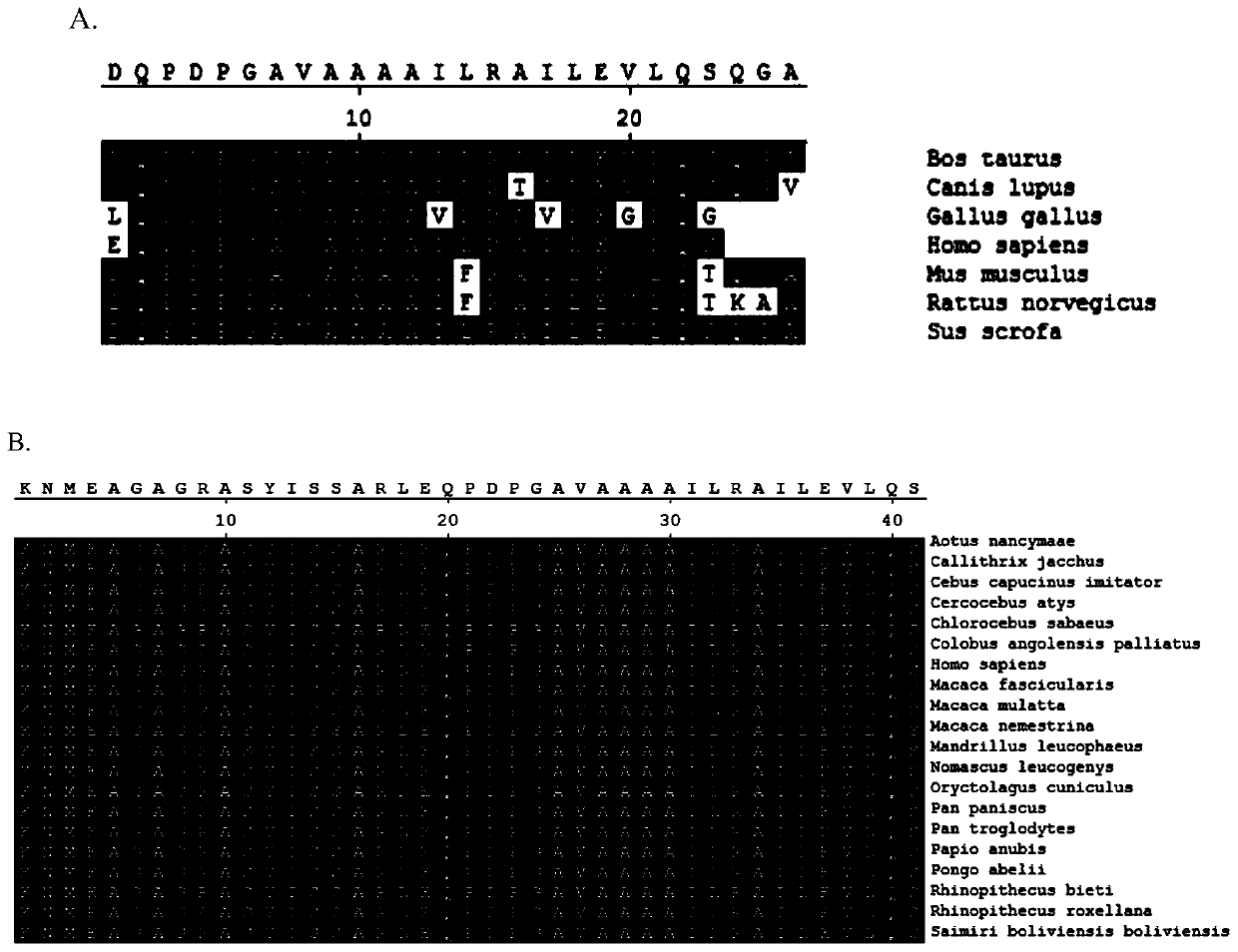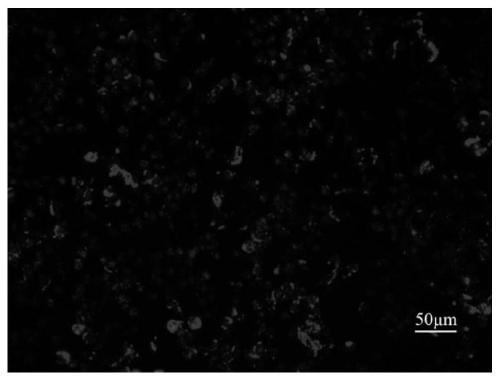Polypeptide having immune cell target recognition function and use thereof
An immune cell, targeted recognition technology, applied in general/multifunctional contrast agents, preparations for in vivo experiments, and analysis by chemical reaction of materials, etc., can solve the problem of no uniform quality standard, uncontrollable antibody quality, Cumbersome preparation and production steps
- Summary
- Abstract
- Description
- Claims
- Application Information
AI Technical Summary
Problems solved by technology
Method used
Image
Examples
Embodiment 1
[0077] The preparation of embodiment 1.EK24 fluorescent probe
[0078] The polypeptide used in the present invention is obtained by conventional solid-phase polypeptide chemical synthesis using a CEM automatic microwave polypeptide synthesizer according to the instructions provided by the instrument supplier. The polypeptide used in the present invention is derived from the C-terminus of human or non-human Triokinase / FMN cyclase.
[0079] In this example, a polypeptide having the following amino acid sequence was synthesized: EQPDPGAVAAAAILRAILEVLQSK.
[0080] Combine the above synthetic peptides with HOOK TM Dye rhodamine labeling kit (Cat. #786-142, Biosciences) was mixed with reagents, adjusted the pH value according to the manufacturer's instructions, and reacted for 1-2 hours. The product was purified by HPLC to obtain the target EK24 fluorescent probe. The chemical structure of the obtained fluorescent probe is as follows:
[0081] EQPDPGAVAAAAILRAILEVLQS-Y(EK24),
...
Embodiment 2
[0083] The preparation of embodiment 2.EK24 fluorescent probe solution
[0084] Add 87 μL of DMSO (dimethyl sulfoxide) to dissolve 1 mg of EK24 fluorescent probe, then add 6873 μL of serum-free DMEM (Hyclone) incomplete culture solution, and pipette thoroughly to obtain a 50 μM EK24 fluorescent probe solution. When needed, the 50 μM EK24 fluorescent probe solution can be diluted by adding serum-free DMEM incomplete culture solution.
Embodiment 3
[0085] Example 3. Fluorescence-labeled staining of mouse macrophage cell lines cultured in vitro
[0086] Cultivate the mouse macrophage cell line RAW264.7 in a 96-well plate, wash the well once with 1×PBS buffer or DMEM incomplete culture solution without serum, remove the washing solution, add 100 μL DMEM without serum The EK24 solution with a concentration of 10 μM diluted in the complete culture solution was left in a cell culture incubator for 1 hour. Afterwards, the wells were washed twice with 1×PBS buffer or incomplete DMEM medium without serum. Then, add DMEM complete culture medium containing 10% FBS and 1% streptomycin-penicillin, add nuclear dye Nucblue (Invitrogen) for counterstaining, in Observe under FL Auto fluorescent microscope (LifeTechnologies, light source 10%, exposure 200ms, gain 5), the result is as follows figure 2 shown.
[0087] figure 2 Shown are images of fluorescently labeled EK24 fluorescent probes (shown as red fluorescence in the origina...
PUM
 Login to View More
Login to View More Abstract
Description
Claims
Application Information
 Login to View More
Login to View More - R&D
- Intellectual Property
- Life Sciences
- Materials
- Tech Scout
- Unparalleled Data Quality
- Higher Quality Content
- 60% Fewer Hallucinations
Browse by: Latest US Patents, China's latest patents, Technical Efficacy Thesaurus, Application Domain, Technology Topic, Popular Technical Reports.
© 2025 PatSnap. All rights reserved.Legal|Privacy policy|Modern Slavery Act Transparency Statement|Sitemap|About US| Contact US: help@patsnap.com



